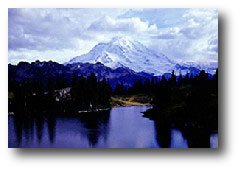Wild and Scenic Rivers
This page is currently under construction, please check back for new and updated information.

The Congress declares that the established national policy of dam and other construction...needs to be complemented by a policy that would preserve...selected rivers in their free-flowing condition...to fulfill...vital national conservation purposes."
Wild and Scenic Rivers Act, Sec. 1, Public Law 90-542; 16 U.S.C. 1271-1287; October 2, 1968
Rivers are an important part of our nation’s natural and cultural heritage. Since time immemorial, they have provided physical sustenance and spiritual inspiration, attracted human settlement, and served as paths for exploration, travel and commerce. The place of rivers in our country’s heritage was recognized in 1968 with passage of the Wild and Scenic Rivers (WSR) Act. The WSR Act (Act) was specifically intended by Congress to balance the federal government’s role in altering rivers for economic development. It strived to meet this balance by establishing a new policy of protecting and enhancing designated rivers’ free-flowing condition, water quality and “outstandingly remarkable values” (ORVs), which may include scenic, recreational, historical, cultural, fish, wildlife, ecological, geological, and hydrological values. As the nation approaches the 40th anniversary of the Act in 2008, key issues relating to regulatory responsibilities, resource protection, recreation, and river policy demand attention. The National Park Service (NPS) is renewing its commitment to preserving the remarkable values of Wild and Scenic Rivers.
As of December 2006, the NPS has statutory management and regulatory responsibilities on 37 WSRs flowing more than 2,800 miles throughout the United States. Of this total, 28 of the rivers are units of the National Park System or contained within a park, and nine are partnership rivers managed in cooperation with state and local governments. Additionally, the NPS has a regulatory role on another 19 WSRs managed by states or tribes under Section 2(a)(ii) of the Act, totaling another 881 miles.
NPS Responsibilities
The NPS has significant responsibilities to ensure that WSRs under our care are fully preserved in their free-flowing condition, and that their water quality and ORVs are protected. The Act requires the NPS to:
- Prepare Comprehensive River Management Plans that identify how to protect and enhance the river and those characteristics for which the segment was designated.
- Establish boundaries and river classification for all designated segments.
- Serve in a regulatory capacity by evaluating and approving (or denying) proposed federally assisted water resources projects that could affect designated NPS segments and state managed and partnership federal wild and scenic river segments.
- Assist, advise and cooperate with the States in the designation and management of rivers, and seek opportunities for sharing management responsibilities with States and other partners.
